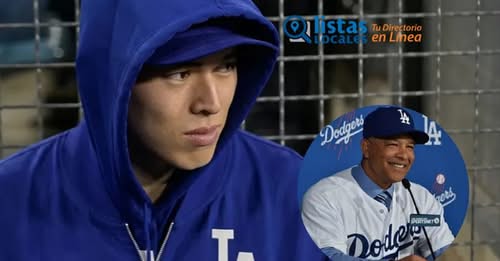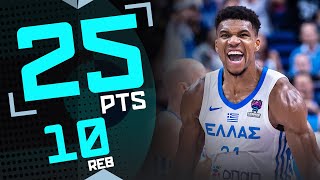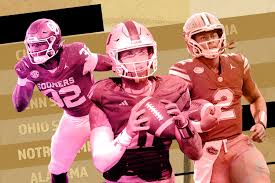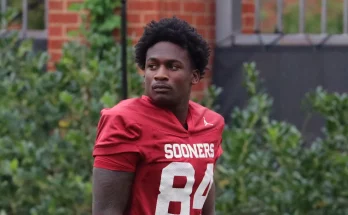From the moment Roki Sasaki stepped onto the mound in his debut Spring Training appearance, it was clear that his arrival in Los Angeles would be significant not just for his arm but for the Dodgers’ identity. Diagnosed with a blazing fastball that topped 99 mph and an unforgettable splitter, Sasaki’s talent was unmistakable . But the journey that followed—a rollercoaster of electric highs, disquieting lows, injury setbacks, and cautious optimism—has become as much a story about culture, patience, and trust under Dave Roberts as it has been about baseball mechanics.
Roberts first glimpsed Sasaki’s potential in February during bullpen sessions. Each outing grew more polished, more confident—“more clean and consistent,” Roberts noted—and with each session, the dream felt closer to reality Sasaki’s raw talent was apparent: a fastball that jumped at batters, complementing a splitter that baffled even veteran catchers .
When Sasaki’s Spring Training audition culminated in a three‑inning relief appearance—five strikeouts, zero runs—it electrified the room and validated years of hype. That Tokyo debut, where he once again flashed triple‑digit heat, punctuated by an aura of serenity and fierce determination, earned Roberts’ praise for his calm high‑stakes temperament .
Roberts reflected afterward: “We saw 99 … that’s the best we’ve seen him,” referencing the fastball velocity that had been lagging in Japan but was reignited in Arizona . It wasn’t just velocity—it was the aura, the poise.
The season officially began in Tokyo in March, with Sasaki slated as the starter in Game 2 of the historic opening series against the Cubs under the dome. The weight of expectations was immense: Japanese media attention, the Dodgers’ own baseballing culture, and Roberts’ personal history with Japan, as the first Asian‑American manager in Major League history, returned with full force .
Sasaki’s debut was a microcosm of raw talent meeting real‑world pressure: five walks, three strikeouts, three earned runs in three innings. Still, Roberts admired how Sasaki battled through a third‑inning bases‑loaded jam, freezing two batters in succession—a moment of maturity amid the chaos . Roberts said, “he made some big pitches for us … it speaks to how competitive he is. That was a pivotal part of the game.”
Back home at Dodger Stadium, Sasaki’s pattern emerged: electric stuff, periodic command lapses. In Los Angeles, he cut last season’s average fastball by over two miles per hour, and command issues persisted—walks and wildness becoming recurring themes . Roberts remained measured: “If you have a lot of success, you’re not used to adversity,” he reminded. “He’s failing for the first time. But you gotta be a pro and get back to work” .
Roberts’ public stance embodied patience balanced with accountability: Sasaki was not the finished product, but he was giving glimpses of what he could be. Roberts tempered expectations after starters hiccupped early on, noting that it would’ve been more surprising if Sasaki had no early missteps given the leap from NPB to MLB .
When Sasaki threw quality starts of five and six innings in April, and his first MLB win arrived in early May, Roberts was quick to applaud the progression—not just the results. In a May 9 start against Atlanta, Roberts emphasized Sasaki’s journey: “He’s starting to be that guy we can count on and be dependable.” That wasn’t just about wins—it was proof that Sasaki’s mental toughness was uniting with his talent.
Then came the setback. After experiencing discomfort in his right shoulder, Sasaki was placed on the 15‑day injured list on May 13, later moved to the 60‑day list by June 20 . Roberts confirmed the diagnosis: a shoulder impingement that required shutting down throwing, rebuilding strength and stability, and then carefully ramping back up—no definite timeline, just caution (pr.
The vivid language Roberts used—about symptoms, recovery, calibrating intensity—underscored his conservative approach: “a patience play, but also a prudent play to appreciate the short‑term and long‑term health of Rōki.” By mid‑June, Roberts admitted that planning the rest of the season without Sasaki was necessary .
It is Roberts’ lineage that underlies much of his empathy for Sasaki’s journey. Born in Okinawa to a Japanese mother, Roberts returned to Japan as a child and was shaped by his heritage—discipline, respect, emotional reserve coupled with inner fire . As manager, he has navigated not just roster strategy, but cultural harmony: from shared meals with Ohtani, Yamamoto, Sasaki and teammates during the Tokyo trip , to bilingual interviews that honor his Japanese roots .
Sasaki’s arrival has enriched the Dodgers’ clubhouse in ways farther than wins and ERA—it has sharpened cultural integration. The presence of three Japanese aces—Ohtani, Yamamoto, Sasaki—has turned the Dodgers into a microcosm of cross‑Pacific baseball ties. Roberts, as cultural bridge and leader, often emphasizes how players have embraced tradition: sushi nights, tuna‑cutting ceremonies, learning from one another .
When Sasaki was injured, Roberts’ concern wasn’t limited to a body part; it extended to his evolving confidence. He spoke of symptom awareness, of rebuilding gradually, of never rushing talented athletes into harm’s way. His tone was measured: “We gotta plan for life without him this year,” yet hopeful he’d return stronger .
Roberts’ dual role as caretaker of the roster and caretaker of Sasaki’s lineage is emblematic of his brand of leadership: it’s strategic, supportive, culturally aware. In his public statements, what resonates most is sincerity: “We still believe in Sasaki, and so should fans”—not just as a player, but as a person in development .
Sasaki’s story is being written through starts of promise, nerve‑jarring misfires, measured optimism, and now a cautious rehab. But under Roberts, one theme has remained constant: belief. “He wants to impress… he’s going up there competing,” Roberts said. “From the outset, I’ve always said we believe that this is a process.”
Roberts’ overarching narrative is not sugar‑coated hype—it’s grounded faith. Sasaki was never going to morph instantly into a Cy Young contender, despite what analysts touted during his posting . Instead, the plan was the patient, incremental one: nurture his development, shield him from injury, integrate him into a dominant Dodgers rotation. Sasaki’s trajectory—spotty command, flashes of elite stuff, health interruption—is exactly the kind of journey Roberts signed up for.
In many ways, Sasaki’s situation is the perfect test of Dodgers depth, of Roberts’ management philosophy, and of a front office built to endure emerging talent through cycles of growth. Roberts has looked comfortable letting the bullpen absorb early innings, letting veteran starters flesh out rotation depth, and keeping long‑term goals in view—offering Sasaki time and space to find his footing.
When Sasaki returns—it may not happen this season, as Roberts has suggested—it will be a small innings reliever or rehab start at first, not another Tokyo opener. His return will be heralded quietly, watched carefully, and booster‑packed by a manager who’s watched him grow in every way.
And as Sasaki takes those first pitches off the intricately balanced rebuilding mound, Roberts will stand beside him—with the patience of his heritage, the wisdom of his experience, and the clarity that his team believes more deeply in who Roki might become than what he already is.
This article charts the arc of Roki Sasaki’s early season: from adrenaline‑fueled showcase to growing pains, cultural integration, injury, and cautious return. All through it, Dave Roberts exemplified a steady hand—patience, belief, and cultural empathy—guiding the team’s brightest future while honoring both heritage and ambition. His words and actions provide a roadmap for growth: carefully paced, always supported, never rushed.
In the end, Sasaki’s “return to the Dodgers”—whether late this year or early next—won’t just be about a fastball, a splitter, or even a win. It will be about a process in which a young international star became part of a deep, culturally rooted, championship‑chasing machine—and where a manager’s steady voice said, “We believe in the process, and we believe in you.”



